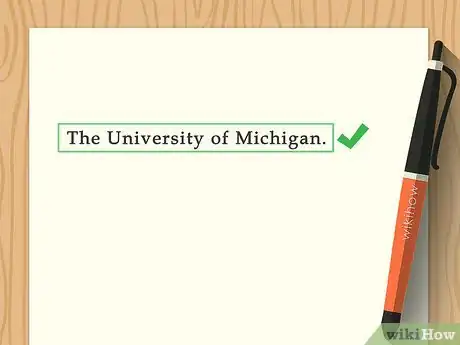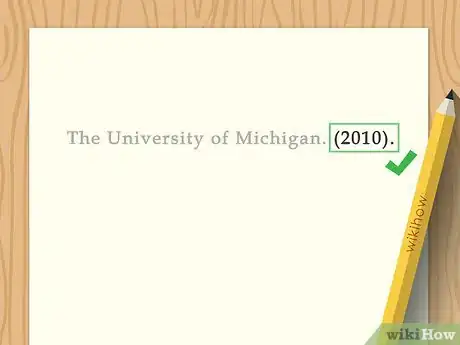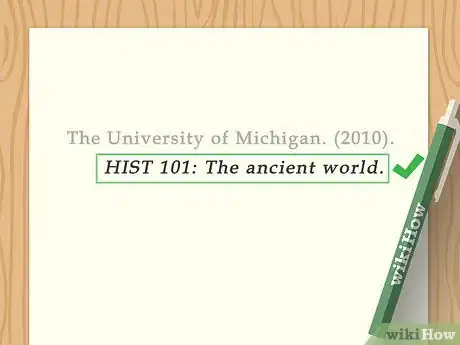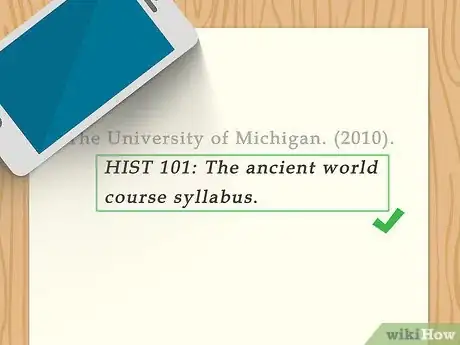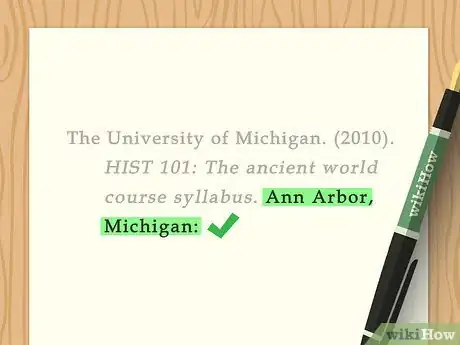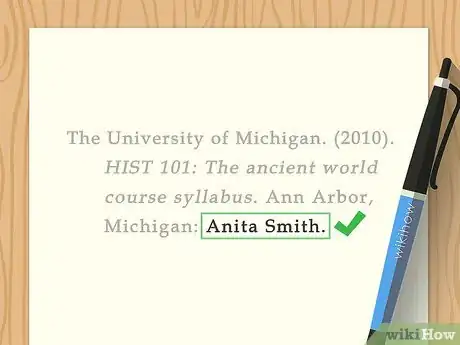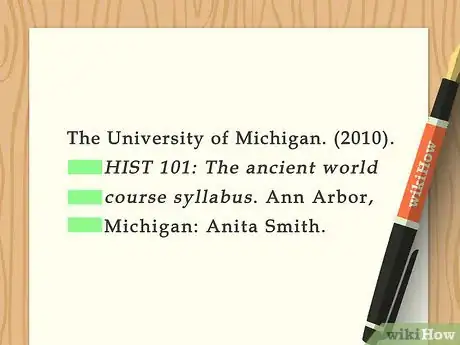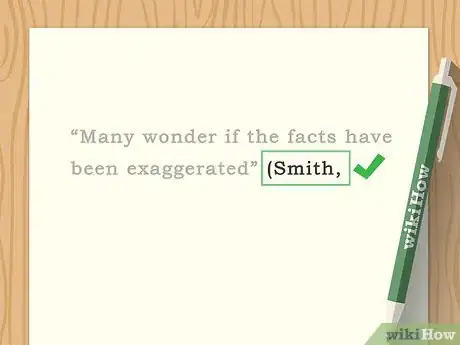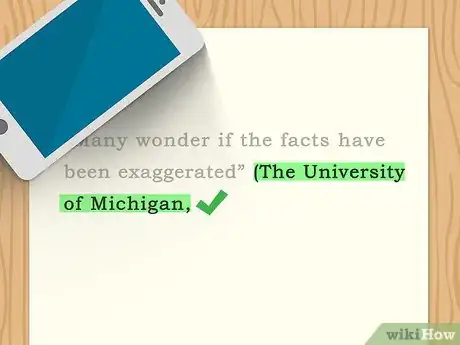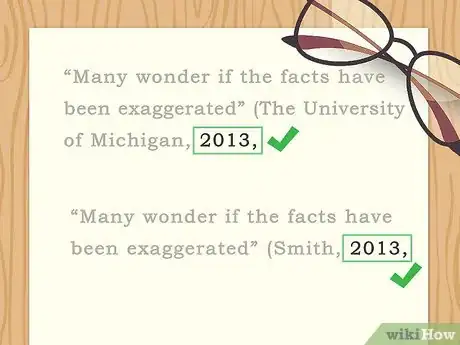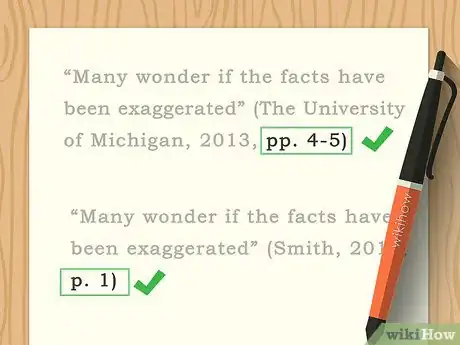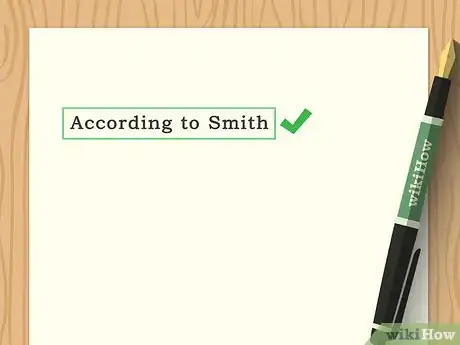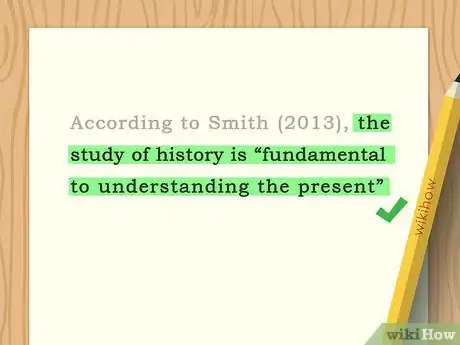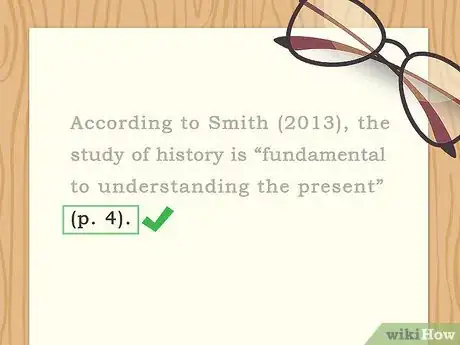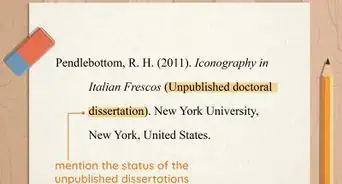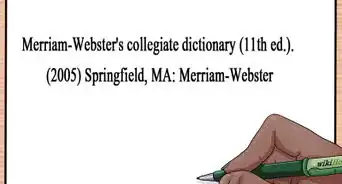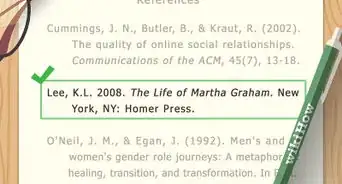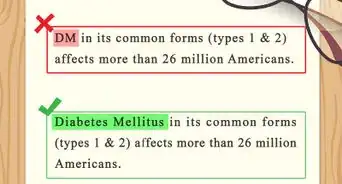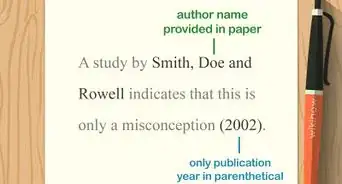This article was co-authored by Cara Barker, MA. Cara Barker is an Assistant Professor and Research and Instruction Librarian at Hunter Library at Western Carolina University. She received her Masters in Library and Information Sciences from the University of Washington in 2014. She has over 16 years of experience working with libraries across the United States.
This article has been viewed 60,912 times.
The American Psychological Association’s (APA) citation style is commonly used by humanities and social science students. If you’re taking those type of courses, you might find that you have to cite your course syllabus using APA guidelines. The formatting of a works cited page is very important, so pay close attention to the formatting rules. There are 2 ways to cite a syllabus in-text. The first is by quoting the syllabus and then citing the source at the end of the sentence. You can also integrate your citation into what you’re saying. It’s a little more complicated to cite, but can make your writing flow better.
Steps
Citing a Syllabus on Your Works Cited Page
-
1List the university or college first. You should use the full name of the university or college where you took the course. Write it out in plain Roman letters (no italics) and end the name of the institution with a period.[1]
- For example, if you took the course at the University of Michigan, you would write “The University of Michigan.” Just writing “Michigan.” isn’t correct.
-
2Indicate the year you took the course in parentheses. You don’t need the semester, just the year you took the course. Write the year in regular Roman letters (no italics) within parentheses and then add a period.[2]
- For example, if you took the course in the fall of 2010, you would just write “(2010).” after the name of the institution.
Advertisement -
3Write the name of the course in italics. You should include the course name and number, as well as the full title of the course, in italics. Only the first letter of the first word of the title and subtitle should be capitalized. Then end the title with a period.[3]
- Say that you’re taking a history course. The name and number is HIST 101, and the title of the course is “The Ancient World.” You would write that as “HIST 101: The ancient world.”
-
4Indicate that the source is a syllabus. If the title of your syllabus actually says “course syllabus,” you should include that in the name of the course. If the title of your syllabus is just the title of the course, indicate that it’s a course syllabus in brackets.[4]
- For example, if your course syllabus says “course syllabus” in the title, you would write it as: “HIST 101: The ancient world course syllabus.”
- If “course syllabus” isn’t part of the title, you would write “HIST 101: The ancient world [Course syllabus].”
-
5Write where the course took place. This should be the same place where you took the class. You can write the city, U.S. state (if applicable), and country. End this portion with a colon.[5]
- For example, if you took the course at the University of Michigan, you would write “Ann Arbor, Michigan:”
-
6End with the name of your professor. After the colon after the location of the course, you need to indicate where you got the source from. This should be the name of the instructor teaching the course.[6]
- For example, if your instructor is Professor Anita Smith, you would write “Anita Smith.”
-
7Skip the location and author title if your syllabus was retrieved online. If your syllabus was available online and that’s where you got it, the end of the citation is slightly different. Instead of writing the physical location of the university and the author’s name, write a retrieval statement.[7]
- For example, if you got your syllabus off of the website Blackboard, after the title of the course (with or without the [Course syllabus] indication), you would write “Available from The University of Michigan Blackboard website: umich.blackboard.edu.”
- The entire citation would therefore look like this: “HIST 101: The ancient world [Course syllabus]. Available from The University of Michigan Blackboard website: umich.blackboard.edu.”
-
8Indent any lines after the first. If you find that your citation takes up more than one line, you’ll need to indent any subsequent lines. This lets your reader see where one source ends and another begins.[8]
Citing a Syllabus in the Text
-
1Start with your instructor’s last name if there is one. If your works cited page citation includes an author’s name, use it for your in-text citation. Start with an open parenthesis, then the author’s last name, followed by a comma.[9]
- For example, if your instructor’s name is Anita Smith, the first part of your citation should look like this: “(Smith,”
-
2List the institution first if there isn’t an instructor name. If you’re not using an instructor/author name on your works cited page, list the institution where you took the course. It should follow the same format as if you were using an instructor’s name.[10]
- For example, if you don’t have an instructor’s name on your works cited page, but you took the course at The University of Michigan, you would write “(The University of Michigan,”
-
3Write the year you took the course. This should match the year you list on your reference page for the course. You don’t need to indicate the semester you took the course, just the year.[11]
- If you took the course in 2013, you would write “(Smith, 2013” or “(The University of Michigan, 2013”
-
4List the page numbers you’re referencing. To end your in-text citation, you’ll need to indicate which pages you’re referencing in your text. It might be 1 page or multiple pages, and that’s fine, as long as you list them all. Write a lower-case “p,” followed by a period, and then the page number. Then end the citation with a closed parenthesis.[12]
- For example, if the information you’re citing is on page 1 of the syllabus, you would write “(Smith, 2013, p. 1).” or “(The University of Michigan, 2013, p. 1).”
- If you’re citing more than one page, use “pp.” instead of “p.” So your citation would look like this: “(The University of Michigan, 2013, pp. 4-5).”[13]
Integrating an In-Text Citation
-
1Mention the author’s name in the text. If you’re integrating the citation into the text you’re writing, you’ll need the author’s name. There are quite a few ways to do this, and how you do it will depend on your own personal preference and the tone of your paper.[14]
- For example, you could say something like “According to Smith...” or “Smith argues that the study of history...”
-
2Include the year cited on the reference page immediately after the author’s name. Regardless of how you incorporate the author’s name in your text, it needs to be followed immediately by the year you use on your reference page. This lets your reader know immediately which source you’re talking about.[15]
- For example, you would write “According to Smith (2013),” or “Smith (2013) argues that the study of history...”
-
3Set off direct quotes with quotation marks. If you’re citing directly from the syllabus, set that information apart with quotation marks. This lets your reader know that these words aren’t yours, but the author’s.[16]
- For example, you could write: According to Smith (2013), the study of history is “fundamental to understanding the present.”
- If you’re using your own words instead of the author’s, you don’t need quotation marks. So you might write “According to Smith (2013), we can only understand the present if we understand history.”
-
4End the citation with the page number or numbers. Once you’ve cited the part of the syllabus you need, end the citation with the page number or numbers where the citations can be found. The page number should set apart by parentheses, a lower case p, followed by a period.[17]
- Your citation might look like this: “According to Smith (2013), the study of history is “fundamental to understanding the present” (p. 4).
References
- ↑ https://bowvalleycollege.libguides.com/c.php?g=494959&p=3625360
- ↑ https://bowvalleycollege.libguides.com/c.php?g=494959&p=3625360
- ↑ https://bowvalleycollege.libguides.com/c.php?g=494959&p=3625360
- ↑ https://bowvalleycollege.libguides.com/c.php?g=494959&p=3625360
- ↑ https://bowvalleycollege.libguides.com/c.php?g=494959&p=3625360
- ↑ https://bowvalleycollege.libguides.com/c.php?g=494959&p=3625360
- ↑ https://socialwork.appstate.edu/sites/socialwork.appstate.edu/files/apa_references_write_social_work.pdf
- ↑ https://socialwork.appstate.edu/sites/socialwork.appstate.edu/files/apa_references_write_social_work.pdf
- ↑ https://penandthepad.com/cite-syllabus-8676492.html
- ↑ https://penandthepad.com/cite-syllabus-8676492.html
- ↑ https://penandthepad.com/cite-syllabus-8676492.html
- ↑ https://penandthepad.com/cite-syllabus-8676492.html
- ↑ https://bowvalleycollege.libguides.com/c.php?g=494959&p=3625360
- ↑ https://bowvalleycollege.libguides.com/c.php?g=494959&p=3625360
- ↑ https://bowvalleycollege.libguides.com/c.php?g=494959&p=3625360
- ↑ https://bowvalleycollege.libguides.com/c.php?g=494959&p=3625360
- ↑ https://bowvalleycollege.libguides.com/c.php?g=494959&p=3625360
